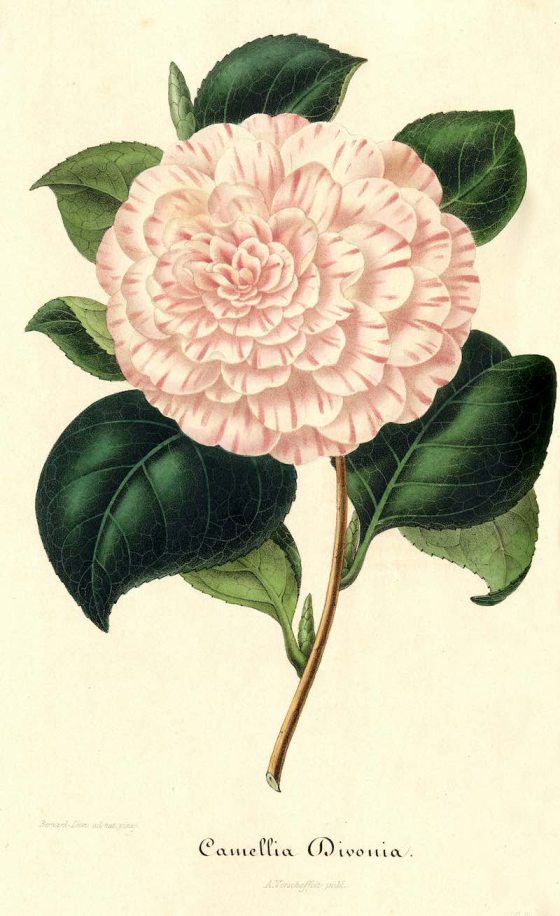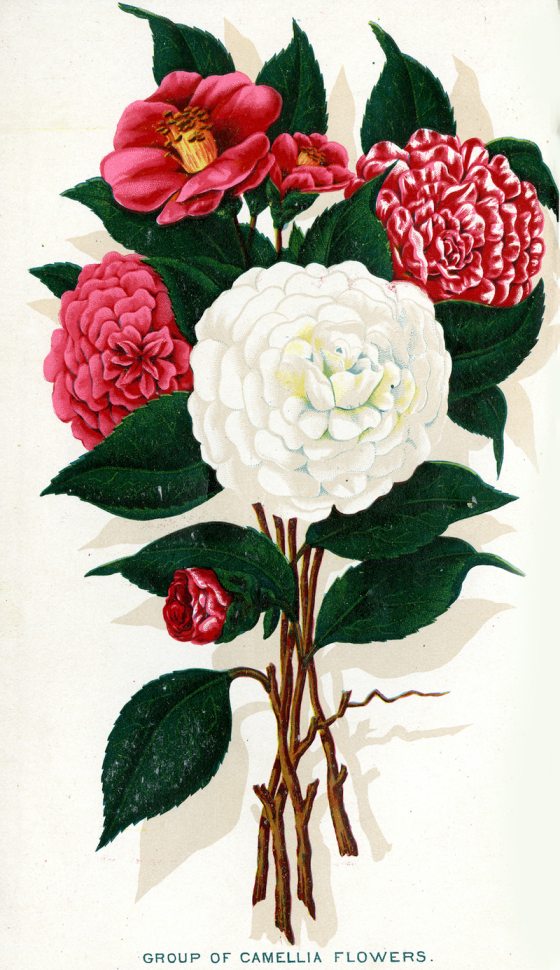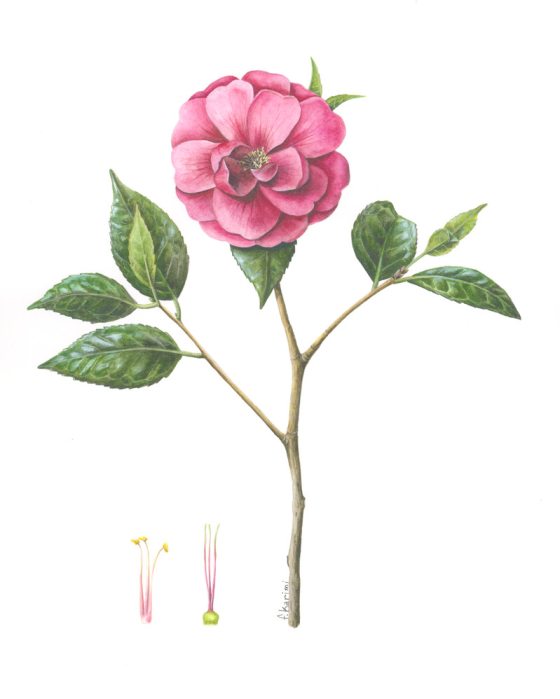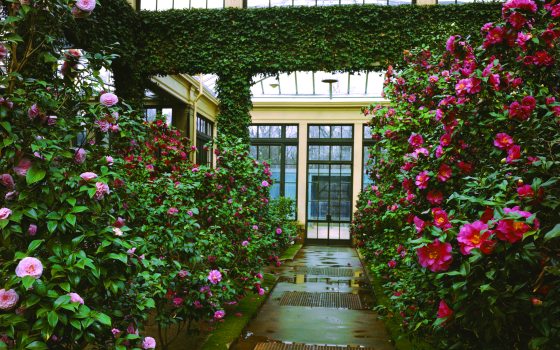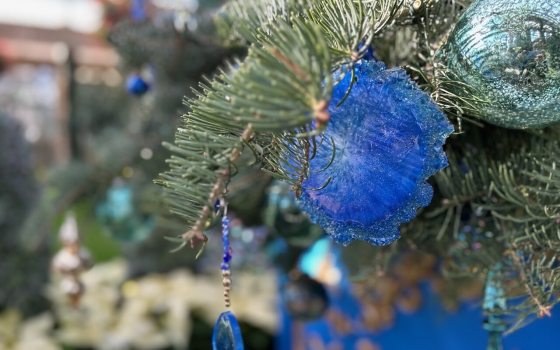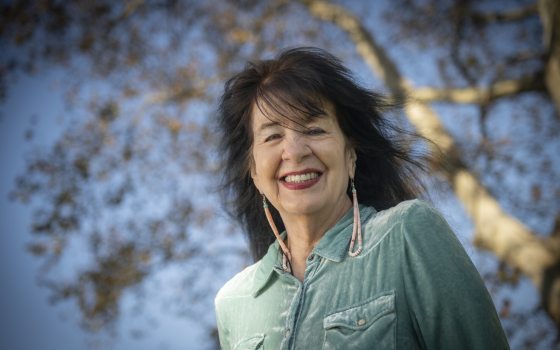This article first appeared in issue 292 of Longwood Chimes, from Winter 2016.
In 1919, Longwood Gardens’ Camellia Collection began in the Conservatory of the Pierce-du Pont House when Pierre S. du Pont obtained 34 Japanese varieties of camellias. These plants came from Belgium and were acquired through John Scheepers Inc. of New York. Soon following, du Pont received an additional 37 varieties from France, which were among the first plants installed in the Main Conservatory.
His passion for camellias continued to grow. In 1928, Mr. du Pont discovered Veuve Guichard, a specialty camellia grower in Nantes, France, who grew and listed an impressive 262 varieties of camellias in its catalog. After receiving authorization from the Federal Horticultural Board, du Pont ordered three each of 189 varieties. However, plants from overseas were small and Mr. du Pont also desired large-specimen camellias. A total of 13 well-shaped camellias with good flowers was sourced domestically from rural Georgia where larger plants would be dug, crated, and shipped to Longwood. The first camellia inventory was performed at Longwood in 1937, documenting 372 plants representing 167 cultivars in the collection.

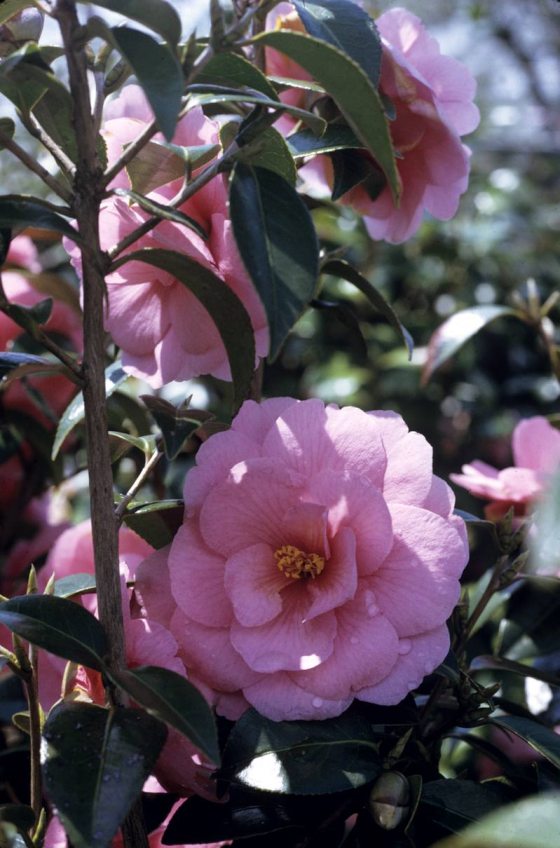
Dr. Russell Seibert began as our first Director in 1957 and initiated the Research Program at Longwood. This program included camellia breeding and hardiness trials with the goal of developing camellia plants that were fully hardy to Zone 6. Longwood collaborated with the US National Arboretum and Dr. Clifford Parks at Descanso Gardens near Los Angeles in this effort. Dr. Parks did most of the hybridizing, with hybrids being evaluated at Longwood and the National Arboretum. Two extremely cold winters in 1977 and ’78, where temperatures fell to –14°F, killed the majority of the trial plants. Although this cold snap was devastating to the breeding program, the low temperatures provided the selection pressure for a new cultivar, Camellia × williamsii ‘Aida’. Dr. Robert Armstrong, Longwood’s Geneticist at the time, made the initial selection in 1974 as this plant showed some additional resilience during harsh winters. Camellia × williamsii ‘Aida’ was formally released in 1995.
Due to the death of most of the trial camellias in the ’70s, Longwood intensified the search for hardy camellias to continue breeding and evaluation. In the mid-80s, Longwood Gardens, the US National Arboretum, Morris Arboretum, and Holden Arboretum embarked on a plant exploration trip to Sochong Island off the coast of South Korea. The plant explorers were amazed to find 20-foot tall groves of camellia trees growing in harsh conditions. Seeds and cuttings were brought back to the participating gardens and placed into hardiness trials. Several hardy selections have been released from this exploration trip, including C. japonica ‘Longwood Valentine’ and C. japonica ‘Longwood Centennial’, both released in 2006.
Longwood Gardens continues to breed and evaluate camellias for cold hardiness. Many new, supposedly cold-hardy camellias were planted at Longwood during the late 1990s and early 2000s. Most grew well until the two most recent exceptionally cold winters, which killed or severely damaged many of them. However, the South Korean camellias continued to show cold tolerance, and a relatively new camellia species, C. chekiangoleosa, the most northerly distributed Chinese camellia species, was essentially undamaged. These species are now being hybridized in hopes of creating offspring that are hardier than either parent. Furthermore, new techniques such as seed embryo rescue (the process of using tissue culture to save underdeveloped seed embryos—think of it as a neonatal care unit for baby plants) are being used in the breeding program to facilitate crosses that would otherwise be impossible.
Camellias, because of their historical and current significance to Longwood, are designated as one of our core collections—plant groups that have increased importance to Longwood. These collections are continually refined and expanded to meet various display, research, and curatorial goals.
Although our camellia breeding and trialing for cold hardiness take place in a non-public area of the Gardens, you can still see camellias on display at Longwood. A year-round display of non-hardy camellias, including a number of different varieties, is located in the East Conservatory. These camellias flower during the winter, creating a must-see stop as you enjoy the Conservatory.
Botanical Illustrations from Longwood Gardens Library and Archives
